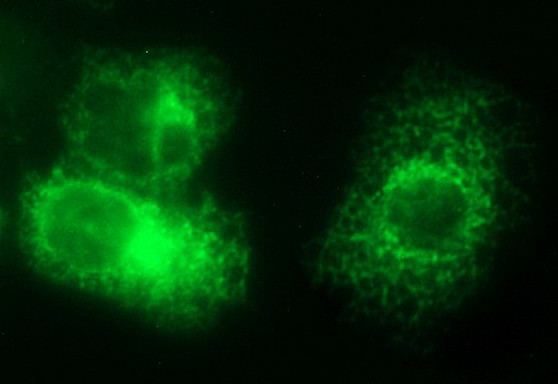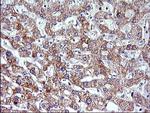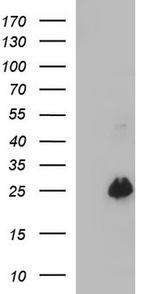Search Thermo Fisher Scientific
产品信息
CF507205
种属反应
宿主/亚型
分类
类型
克隆号
抗原
偶联物
形式
浓度
纯化类型
保存液
内含物
保存条件
运输条件
产品详细信息
For reconstitution, we recommend adding 100 µL distilled water to a final antibody concentration of about 1 mg/mL. To use this carrier-free antibody for conjugation experiments, we strongly recommend performing another round of desalting. (Zeba Spin Desalting Columns, 7KMWCO, 0.5 mL, Product # 89882)
靶标信息
Vascular endothelial growth factors (VEGFs) are a family of closely related growth factors having a conserved pattern of eight cysteine residues and sharing common VEGF receptors. VEGFs stimulate endothelial cells, induce angiogenesis, promote cell migration, increase vascular permeability, and inhibit apoptosis. VEGFB has structural similarities to VEGF and PIGF and is frequently co-expressed with VEGF. There are two alternatively spliced isoforms of VEGFB: VEGFB 167 and VEGFB 186. VEGFB 167, a highly basic heparin-binding protein, remains with the cell or extracellular matrix whereas, VEGFB 186 is readily secreted. VEGFB stimulates endothelial cell proliferation. VEGFB binds to the tyrosine kinase receptor VEGFR1 (flt1) and does not bind to VEGFR2. Vascular Endothelial Growth Factor B is widely expressed but is most abundant in heart, skeletal muscle, and pancreas. It has been suggested that VEGFB expression in human primary breast cancers is associated with lymph node metastasis. The genes that encode VEGFB have been mapped to chromosome 11q13.
仅用于科研。不用于诊断过程。未经明确授权不得转售。
篇参考文献 (0)
生物信息学
蛋白别名: Vascular endothelial growth factor B; VEGF-B; VEGF-related factor; VRF
基因别名: VEGFB; VEGFL; VRF
UniProt ID: (Human) P49765
Entrez Gene ID: (Human) 7423






